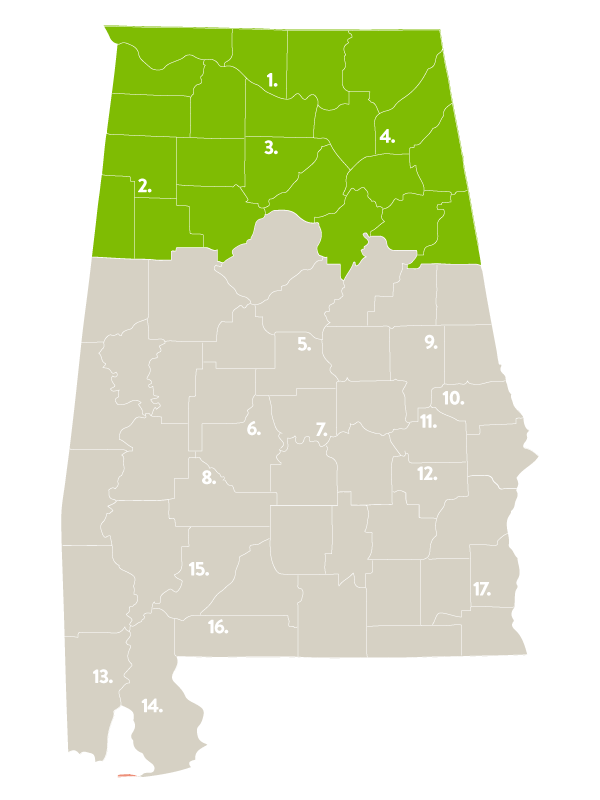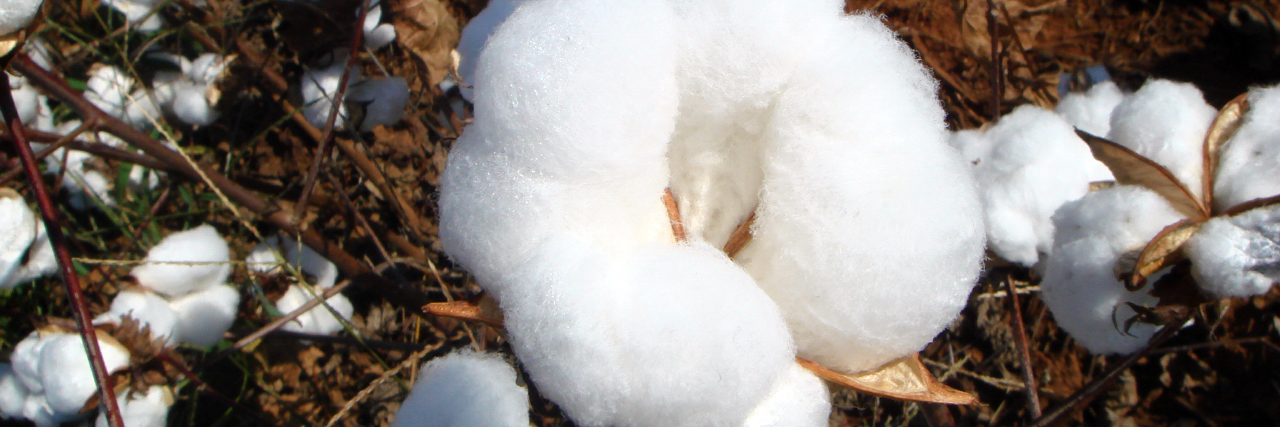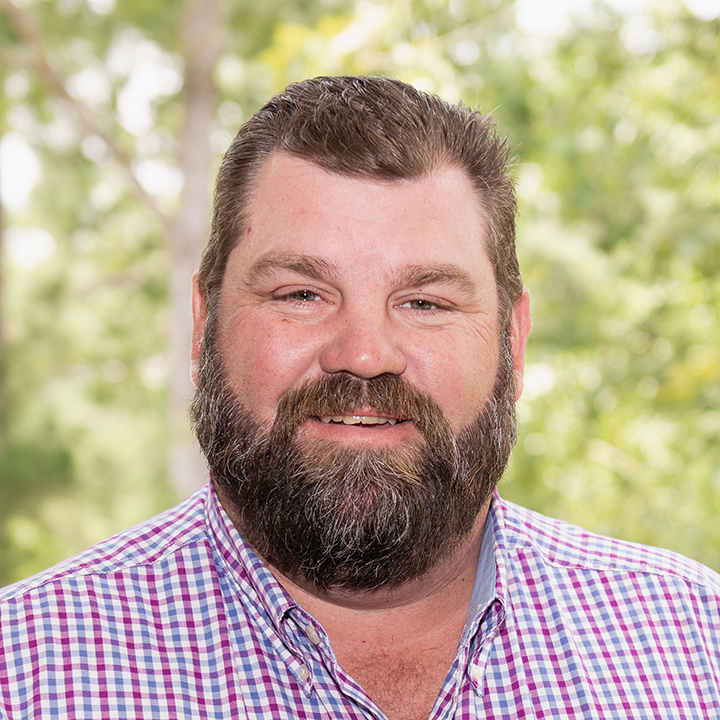
North Region
Alabama Research Units
1. Tennessee Valley Research and Extension Center (TVREC)
2. Upper Coastal Plain Agricultural Research Center (UCPARC)
3. North Alabama Horticulture Research Center (NAHRC)
4. Sand Mountain Research and Extension Center (SMREC)

TENNESSEE VALLEY RESEARCH & EXTENSION CENTER
Belle Mina, AL — The Tennessee Valley Research and Extension Center is located just north of the Tennessee River, a stone’s throw from Interstate 65, right in the heart of Alabama’s top cotton-producing region and directly on the cutting edge of cotton research. Though TVREC research projects frequently target corn, soybeans and wheat, cotton claims the lion’s share of attention, and it is for its cotton research that the center is nationally recognized.
The TVREC was an early convert to precision agriculture technologies and today has a full inventory of global positioning system–based equipment that includes autosteer tractors, yield monitors and light-bar guidance systems.

AREAS OF RESEARCH
-
COTTON – Variety evaluations and long-term fertility tests; sprinkler (overhead) irrigation, subsurface irrigation and fertigation; disease and nematode management
-
VARIETY EVALUATIONS – Cotton, corn, soybeans and wheat
-
PRECISION TECHNOLOGY – Evaluation of geospatial navigation tools for efficient application of plant nutrients
HISTORY
The Tennessee Valley Research and Extension Center (formerly known as the Tennessee Valley Substation) was established in 1929 in Belle Mina and immediately began studies involving poultry, corn, cotton and truck crops. The station’s later work focused on pasture development as livestock became increasingly important in north Alabama. The station was the site for dairy demonstration units in the 1940s and during the 1950s and 60s was the site for cotton mechanization work under leadership of Tom Corley. Work on irrigation began in 1986 with the installation of an irrigation facility to study techniques needed by the farming industry. The Tennessee Valley Substation was one of the first substations established in Alabama by the Legislature to create research facilities in five main areas of the state: Tennessee Valley, Sand Mountain, Black Belt, Wiregrass and Gulf Coast. Three of the five went into operation in 1929: The Tennessee Valley Substation at Belle Mina, the Sand Mountain Substation at Crossville and the Wiregrass Substation at Headland. The remaining two, the Black Belt Substation at Marion Junction and the Gulf Coast Substation at Fairhope, began operating in 1930.
TN Valley Weather
Contact
P.O. Box 159
Belle Mina, AL 35615
+1 (256) 353-3978
Ship to:
Tennessee Valley Research & Extension Center
9494 Experimental Loop
Madison, AL 35756

Cody Key
Associate Director
Tennessee Valley Research & Extension Center
+1 (256) 353-3978
Directions
OFFICE HOURS
Monday — Friday
Facilities
Upper Coastal Plain Agricultural RESEARCH & EXTENSION CENTER
Winfield, AL — The uneven terrain of the Upper Coastal Plain Agricultural Research Center could be challenging for row crop production, but for the cattle, pastureland and forage crop management research that takes center stage at the UCPARC, it’s ideal. The 735-acre UCPARC is located in northwest Alabama’s Marion County.
AREAS OF RESEARCH
-
CATTLE, PASTURELAND, & FORAGE CROP – Research is conducted on the center’s 735 acres, including efforts to develop switchgrass varieties that provide forage, improved conservation and bioenergy value. These grasses offer a number of distinct benefits compared to many annual row crops, including broad adaptation, improved soil conservation and quality, reduced greenhouse gas emissions, and carbon sequestration.
-
BEEF CATTLE – Impact of BVDV on herd health and economics.
-
FORAGE PRODUCTION – Effect of green June beetle larva on stand persistence in fescue pastures fertilized with broiler litter; variety evaluation of cool season grasses.
HISTORY
The Upper Coast Plain Agricultural Research Center (formerly known as the Upper Coastal Plain Substation) was established on 734 acres near Winfield (in Fayette and Marion counties) in 1944; it was the first of five new substations added to the outlying branch system in the 1940s.
A small dairy unit received considerable emphasis in the early years. In later years beef cattle and swine research as well as forage and horticultral crop studies have provided information needed by local, small-acreage farmers of this region of the state.
The Upper Coast Plain Substation was one of the five substations established in Alabama during and a few years after World War II: Upper Coastal Plain in 1944, Piedmont Substation in 1945, North Alabama Horticulture Substation at Cullman in 1948, Chilton Area Horticulture Substation at Clanton in 1948 and the Lower Coastal Plain Substation at Camden in 1948.
Upper Coastal Plain Weather
Contact
Upper Coastal Plain Agricultural Research Center
171 Experiment Loop
Winfield, AL 35594
+1 (205) 487-2150

David Harkins
Regional Director, North Region
P.O. Box 159
Belle Mina, AL 35615
+1 (256) 353-3978
Directions
OFFICE HOURS
Monday — Friday
Facilities
SAND MOUNTAIN RESEARCH & EXTENSION CENTER
Crossville, AL — Agriculture is the economic lifeblood of northeast Alabama’s rural Sand Mountain region, and for eight decades now, the Sand Mountain Research and Extension Center has played a key role in strengthening the area’s farm sector. The goal of SMREC research is to develop farm management practices that will help the region’s livestock, poultry, row crop and commercial vegetable producers—particularly small-scale farmers—to operate more efficiently, sustainably and profitably.
AREAS OF RESEARCH
- MANURE AND NUTRIENT MANAGEMENT – Use of broiler litter in crop production
- VEGETABLES, FRUITS AND BERRIES – Evaluation of new cherry and grape cultivars for north Alabama
- PECANS – Evaluation of new cultivars for north Alabama
- VARIETY EVALUATIONS – Evaluation of new varieties of tall fescue, annual ryegrass and legumes as well as different varieties of corn, soybean, wheat, barley, oats, triticale and ryegrass
HISTORY
The Sand Mountain Research and Extension Center (formerly known as the Sand Mountain Substation) was established at Crossville in 1929 initially to investigate horticulture and truck crops, but studies in hog and poultry production gained the increasing attention of investigators in subsequent years. The first management unit established at Sand Mountain Substation was a 96-acre farm that combined cotton production with hogs and production of the necessary hog feed crops. A cotton-dairy unit was added later. The substation served as demonstration farm in the 1940s and during the 1950s and 60s was the site for cotton mechanization work under leadership of Tom Corley.
Sand Mountain Substation was the site of an innovative approach to environmental protection in the early 1990s with the design and testing of artificial wetlands to filter waste water from a swine operation at the facility. A constructed wetland was effective in reducing the nitrogen and phosphorus levels of the swine lagoon water discharge. Success of this wetlands to filter waste water from a production unit provided pioneering results for use in agriculture.
Sand Mountain Substation was one of the first five substations established in Alabama by the legislature to create research facilities in five main areas of the State: Tennessee Valley, Sand Mountain, Black Belt, Wiregrass and Gulf Coast. Three of the five went into operation in 1929: The Tennessee Valley Substation at Belle Mina, the Sand Mountain Substation at Crossville, and the Wiregrass Substation at Headland. The remaining two, the Black Belt Substation at Marion Junction and the Gulf Coast Substation at Fairhope, began operating in 1930.
Sand Mountain Weather
Contact

Clint McElmoyl
Associate Director
Sand Mountain Research
& Extension Center
+1 (256) 528-7133
Directions
OFFICE HOURS
Monday — Friday
Facilities

